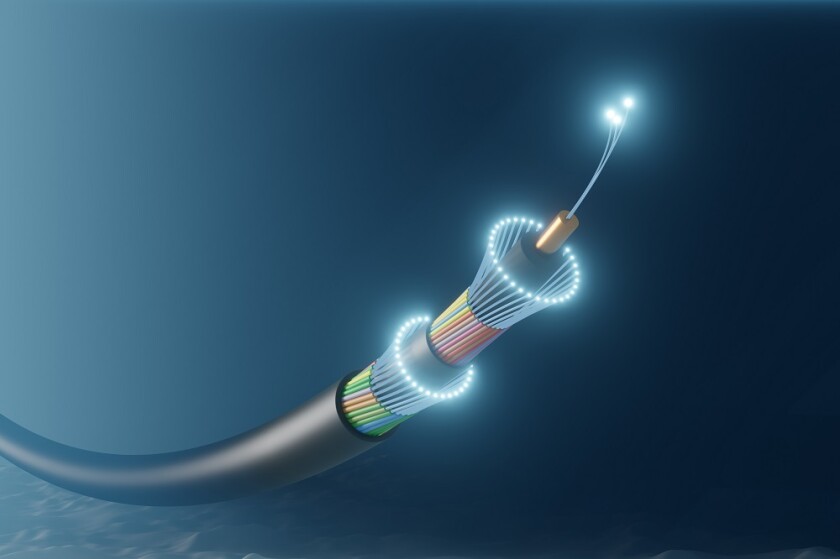However, new submarine cables cost tens or even hundreds of millions of dollars and can take many years to progress from concept to commercial services running over a cable. Fortunately, it is common practice to update the submarine line terminal equipment (SLTE), the equipment placed in landing stations on the shore at the ends of the cable, multiple times during the engineering life of the cable – especially the transponders.
The industry is now in the fifth generation of coherent transponders, and these optical engines contain a wide range of features designed to extract the maximum capacity from all types of cables. A taxonomy of these is shown in Figure 1. Note that each type of cable was designed using the best information at the time for both the cable technology and the transponder capabilities available.

Dispersion-managed Cables (Cables Deployed Between 1998 and 2012)
There are hundreds of examples of dispersion-managed cables worldwide, and these cables were originally designed to support direct-detect transponders with data rates of 2.5 Gb/s or 10 Gb/s per wavelength. They had to deal with the problem of chromatic dispersion (CD), and they did this by alternating lengths of positive- and negative-dispersion fibers, keeping the magnitude of CD within limits that a direct-detect transponder could tolerate. When coherent transponders became available around 2010, CD could then be compensated for in the transponders themselves. By upgrading to coherent transponders with data rates of 100 Gb/s, capacity was increased overnight by up to a factor of ten, and subsequent generations of transponders have typically doubled this each time.
While this has been a superb way to extend the economic life of these older cables, dispersion-compensating fiber has a low effective area, and combined with a generally low level of CD, the nonlinear penalty in these cables tends to be high. This becomes the limiting factor for fiber pair capacity.
Some state-of-the-art fifth-generation engines are able to extend capacity by taking advantage of powerful emerging ASIC technology to implement even more effective nonlinear mitigation and compensation.
Large-area, Positive-dispersion Cables (LA/D+, Deployed 2012-2020)
Once coherent transponders became available, the designers of submarine wet plants soon came up with cable types that could take advantage of these new capabilities. In short, they created a design in which positive-dispersion fiber was used along the whole cable length, and they were able to use a newer type of fiber that had a larger effective area. The combination of these two properties meant that the nonlinear penalty in these cables was much lower, and one consequence was that the repeaters could be run at higher power levels. This in turn meant that higher spectral efficiencies could be achieved – in fact, the MAREA trans-Atlantic cable was the first to support 16QAM modulation and 200G per wavelength over a distance of 6,600 km. LA/D+ cables were optimized for capacity per fiber pair, but they retained the traditional approach of having dedicated backup pump lasers for each repeater. This meant that there was a limit to the number of fiber pairs that could be supported in a given cable – and for MAREA that meant eight fiber pairs.
The latest coherent transponders like Infinera’s ICE6 are so successful on these cables that they are now pushing to within one or two dB of the practical fiber capacity limits for the system. So, with limits on the fiber pairs, how can future cables support even more capacity?
Space-division Multiplexing (SDM) Cables (Deployed 2020 à)
The answer is to find a way to support more fiber pairs per cable, and this is what SDM cables are designed to do. An SDM cable includes the ability to share the backup pump lasers in the repeaters across multiple fibers instead of having dedicated backup lasers. This means that there is enough electrical power to support more fiber pairs than with dedicated backup pumps – for example, the Dunant trans-Atlantic SDM cable is almost the same length as MAREA but can support 12 fiber pairs instead of eight. SDM also tends to operate repeaters at lower power levels as another way to economize on electrical power. This means that signals operate well inside the linear range of the fiber and that less expensive traditional fiber can be used instead of the more expensive large-effective-area fiber previously used by cables like MAREA. The capacity per fiber pair is lower, but the capacity over the overall cable is higher. Assuming both cables use the latest transponders, MAREA can support a total of 224 Tb/s, while Dunant can support 300 Tb/s.
Higher-fiber-count cables are a key factor in optimizing operational economics, because maritime maintenance costs are calculated on the cable as a whole, so with more fiber pairs, the cost per fiber pair drops. Google has announced a 16-pair trans-Atlantic cable based on SDM, and the technology roadmap could take us to 32-pair cables using technologies and fiber types that are tried and tested already.
Summary
Submarine cables are designed to last for at least 25 years, and over this period there will be at least one cycle of cable evolution as well as multiple cycles of transponder evolution. Once a cable is deployed, the only way to upgrade capacity is by moving to the next generation of transponders. Since new submarine cables may take years to deploy, there is significant value in extending the economic life of these cables in this way.





